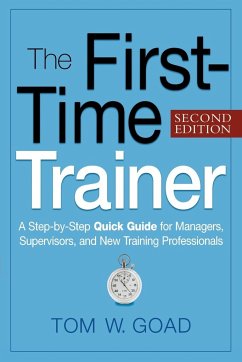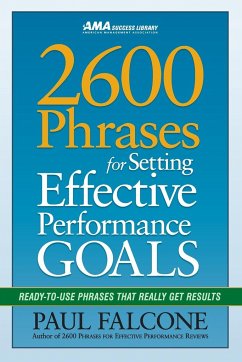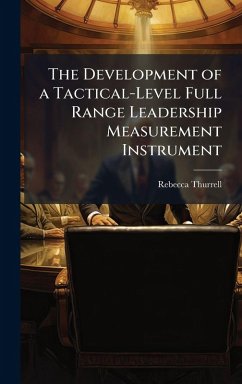
Developing an Upward Feedback Instrument for Supervisor Development
Versandkostenfrei!
Versandfertig in über 4 Wochen
29,99 €
inkl. MwSt.
Weitere Ausgaben:

PAYBACK Punkte
15 °P sammeln!
Recently, organizations have been modifying performance appraisal systems to collect data from multiple sources to guide the development of supervisors. Upward feedback programs focus on development rather than appraisal by supplementing traditional downward feedback with subordinate feedback. The upward feedback instrument developed in this study was designed to measure effective leadership behaviors utilizing an existing five-dimension leadership taxonomy and a new dimension that represents creating a fun workplace. The developed instrument and a proven commercial instrument utilizing the sa...
Recently, organizations have been modifying performance appraisal systems to collect data from multiple sources to guide the development of supervisors. Upward feedback programs focus on development rather than appraisal by supplementing traditional downward feedback with subordinate feedback. The upward feedback instrument developed in this study was designed to measure effective leadership behaviors utilizing an existing five-dimension leadership taxonomy and a new dimension that represents creating a fun workplace. The developed instrument and a proven commercial instrument utilizing the same theoretical framework were administered to samples of N = 391 and N = 417 respectively, and tested for reliability and validity. Scale reliability of both instruments was assessed utilizing internal reliability and test-retest analysis. The validity of the commercial instrument was assessed using factor analysis, and the developed instrument validity was assessed using nested model confirmatory factor analysis. This work has been selected by scholars as being culturally important, and is part of the knowledge base of civilization as we know it. This work was reproduced from the original artifact, and remains as true to the original work as possible. Therefore, you will see the original copyright references, library stamps (as most of these works have been housed in our most important libraries around the world), and other notations in the work. This work is in the public domain in the United States of America, and possibly other nations. Within the United States, you may freely copy and distribute this work, as no entity (individual or corporate) has a copyright on the body of the work. As a reproduction of a historical artifact, this work may contain missing or blurred pages, poor pictures, errant marks, etc. Scholars believe, and we concur, that this work is important enough to be preserved, reproduced, and made generally available to the public. We appreciate your support of the preservation process, and thank you for being an important part of keeping this knowledge alive and relevant.












